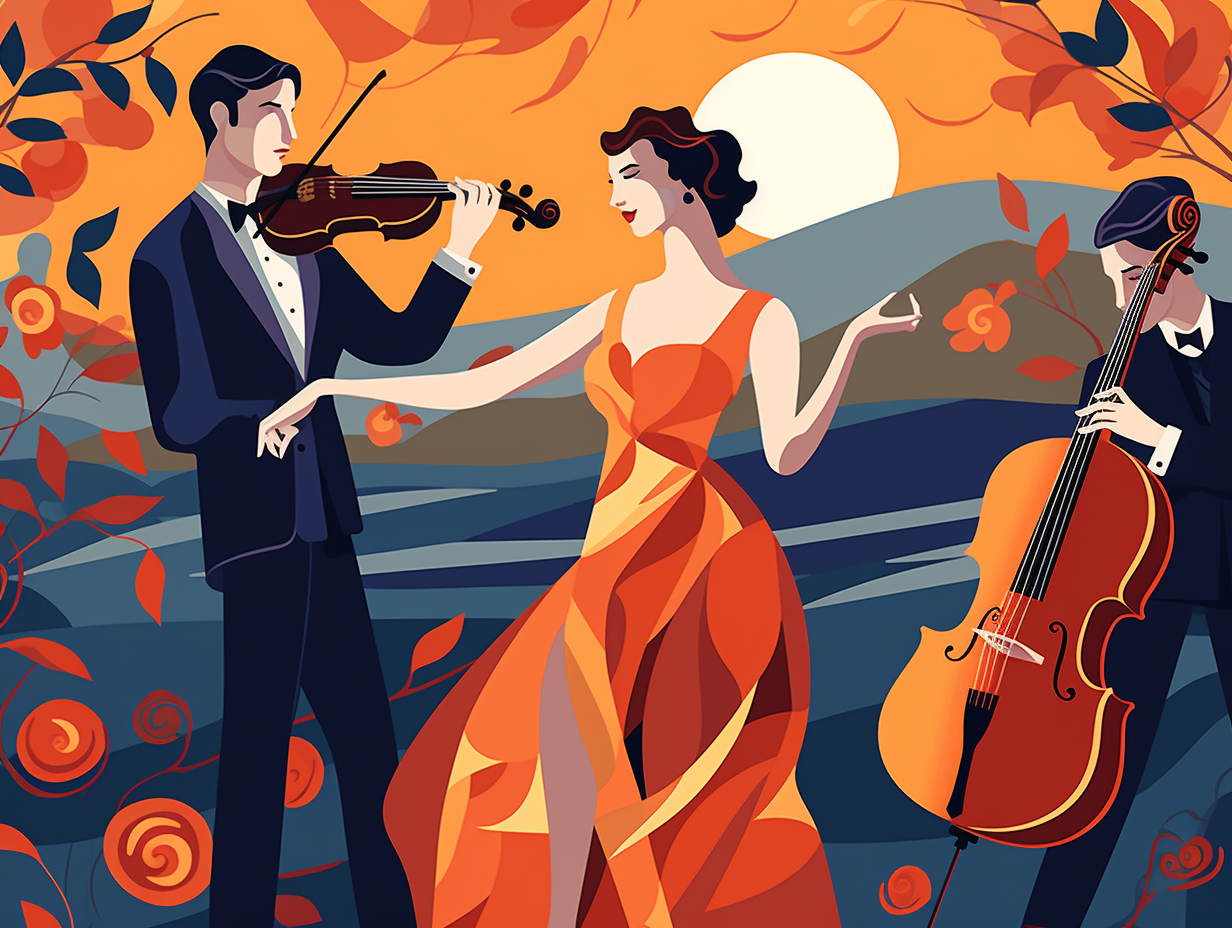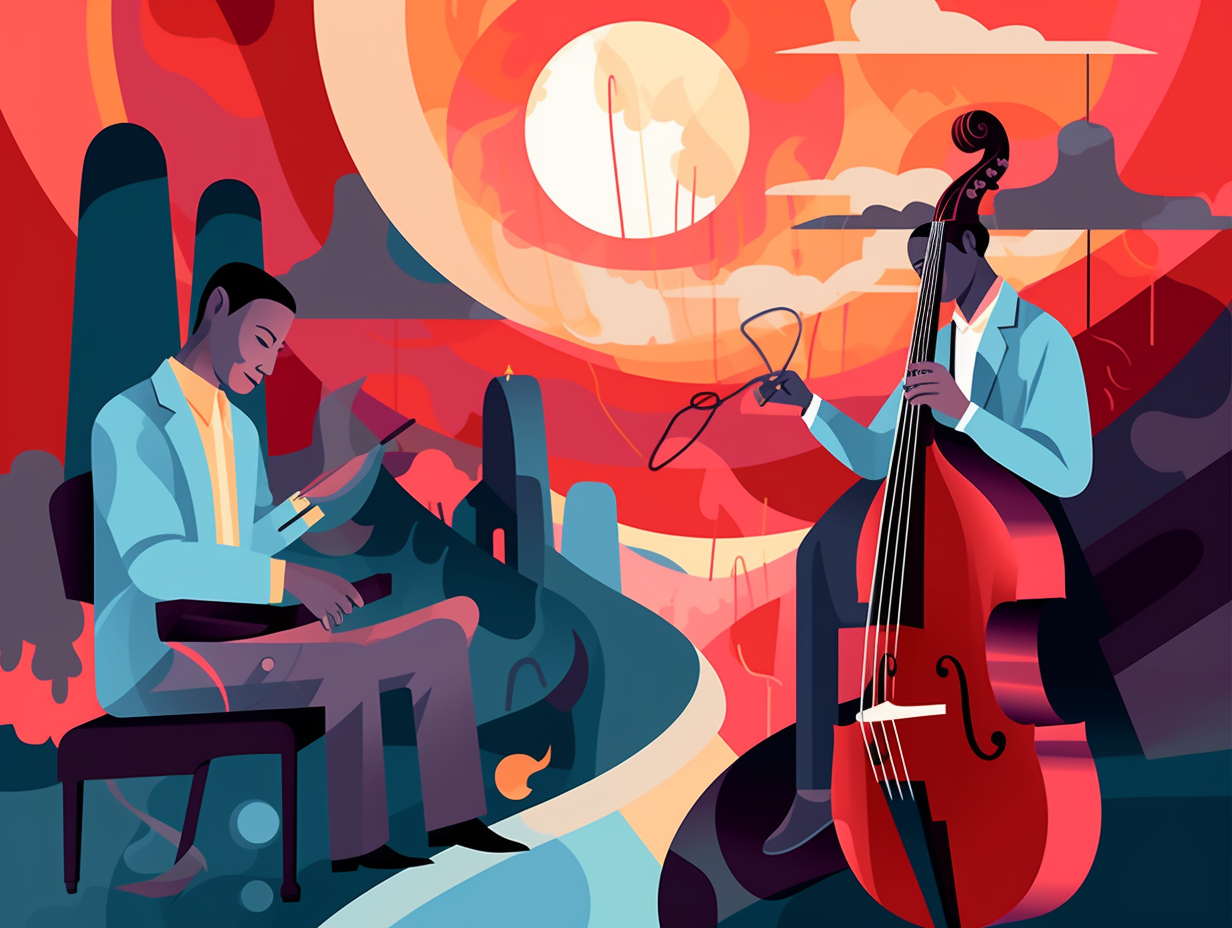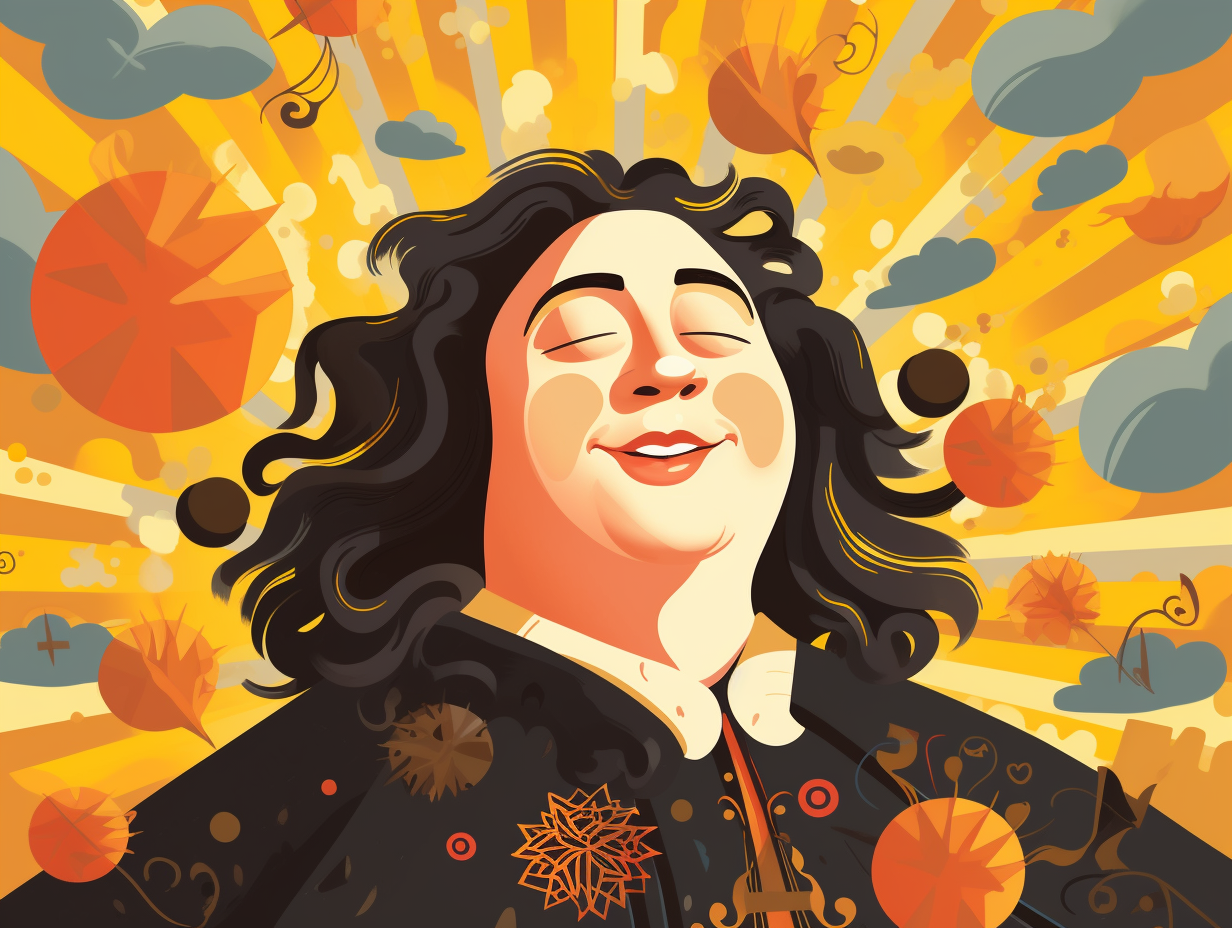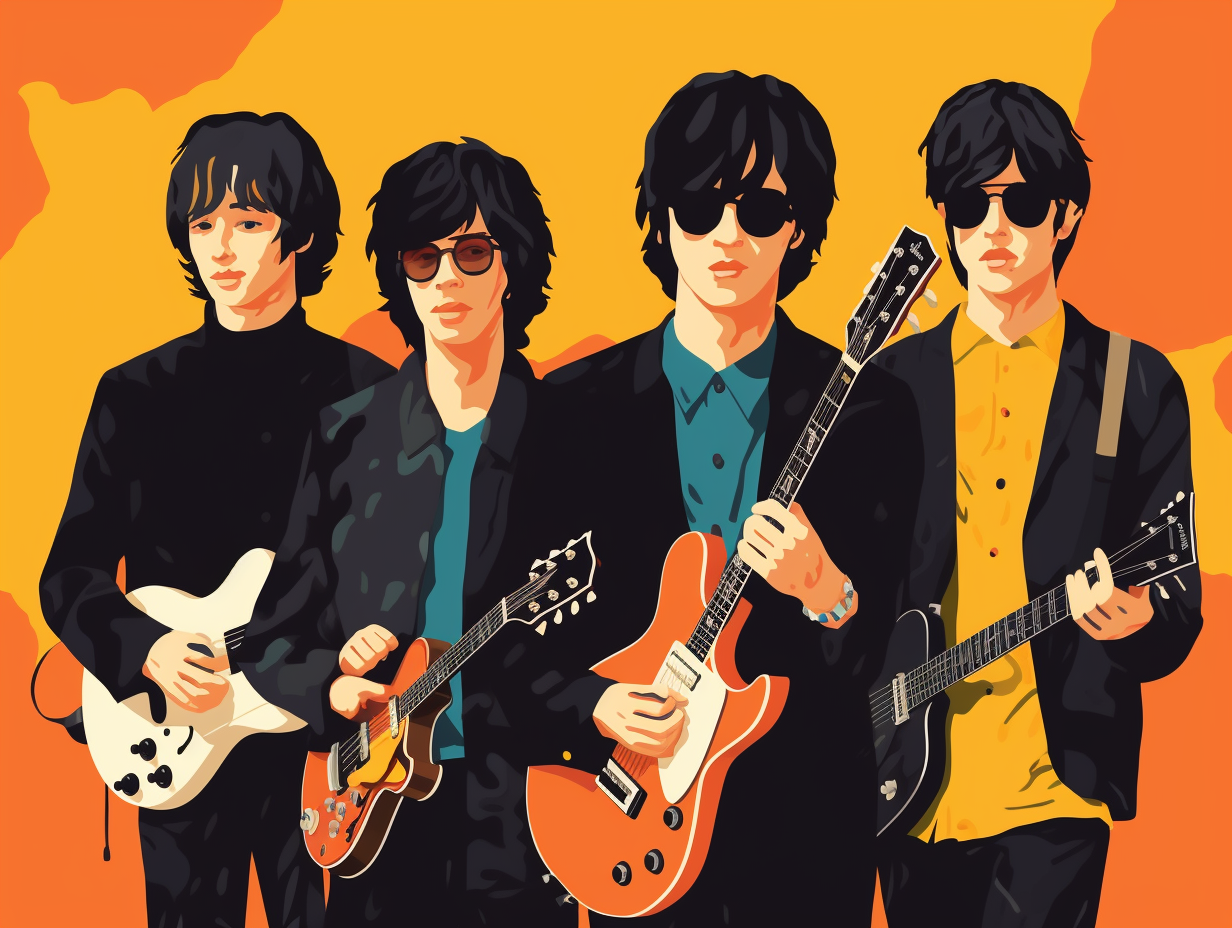Discover the Avant-Garde World of John Cage: Top 14 Fun Facts You Never Knew

1. Silent masterpiece: 4'33"
Whoever said silence is golden clearly never met John Cage: The composer's unique piece, 4'33", is actually a musical performance of pure silence lasting precisely that long, enveloping the audience in a world of ambient noise and their own perception. This creative challenging of musical norms even found its way onto The Late Show with Stephen Colbert, where a cat took center stage as a silent performer, and Cage's quiet creation sparked the "Cage Against the Machine" campaign that strived - and achieved! - to make 4'33" the UK's 2010 Christmas number one, highlighting the struggles of artists during the COVID-19 lockdown of cultural institutions.
Source => en.wikipedia.org
2. Cactus encounter: botanical symphonies
Who knew prickly encounters could be so fruitful? In 1975, when John Cage was serenaded by a dried cactus, it sparked the birth of botanical symphonies: This chance encounter led Cage to compose pieces like Child of Tree and Branches, where he instructed performers to craft 10 music instruments from plant materials, including the Mexican Poinciana tree's pod, and improvise with a stopwatch, all based on the wisdom of the I Ching.
Source => johncage.org

Did you know Haydn's tomb has two skulls? Find out the bizarre reason and the curious head-napping tale from the 19th century!
=> Fun Facts about Classical-Music
3. Zen mixtape master: Cage's DJ Khaled
If Zen Buddhists composed a mixtape, John Cage would be their DJ Khaled: a true maestro of blending the conscious and unconscious mind in his question-filled, absurdly amusing musical creations, heavily influenced by the teachings of D. T. Suzuki and his quest to rid himself of spiritual blindness.
Source => faena.com
4. Melodic fortune cookie: Music of Changes
Ready for a melodic fortune cookie treat? John Cage's Music of Changes cracked open the I Ching to reveal the delicious recipe for randomness in musical compositions: The first work of its kind, Cage's Music of Changes used the ancient Chinese divination text to determine aspects like duration, tempo, and dynamics, meticulously notating the process to allow replication while embracing individual interpretation and creativity as the unifying ingredient in his aleatoric concoctions.
Source => en.wikipedia.org

5. Shroomphonic game show success
What do common fungi and the high notes of avant-garde composition have in common? They both gave an Italian game show contestant a taste of "shroomphonic" success: John Cage, the renowned experimental composer, made a delightful detour from the world of music to showcase his fungal prowess on the Italian television quiz show Lascia o Raddoppia? (Double or Nothing) in 1959. His expertise on mushroom identification, which he incidentally taught at the New School for Social Research, helped him win 5 million lire (equivalent to about $8,000 or £3,000) by correctly answering every question, including naming 24 species of white-spored Agaricus in alphabetical order.
Source => theguardian.com
6. Duchamp's influence on Cage's art
What do you get when you cross an avant-garde composer with a French artist? The sweet sound of influence: John Cage was so enamored by Marcel Duchamp's artistic genius that he dedicated a section of his book "M: Writings '67-'72" to his artistic vision, and masterfully incorporated the use of everyday objects, like Duchamp, into his innovative piece "4'33"," transforming mundane life noises into accidental musical symphonies.
Source => donlonbooks.com
7. Mona Lisa's invisible piano: Cage's visuals
If the Mona Lisa played an invisible piano, da Vinci might have had a worthy rival: John Cage was not only a revolutionary composer but also a talented visual artist, dabbling in prints, drawings, and watercolors throughout his life, often intertwining his auditory and visual masterpieces in exhibitions.
Source => masterclass.com
8. A Cage match worth remembering: Love & art
When love and arts collide, you get a Cage match worth remembering: John Cage and Merce Cunningham were not only life partners in an intimate personal relationship, but they also shared an unparalleled artistic partnership that spanned from the 1940s until Cage's death in 1992, with Cunningham continuing to choreograph to Cage's music even after his passing.
Source => sites.northwestern.edu
9. Radio enthusiast's dream: Imaginary Landscape No. 4
Ever wondered what might happen if a bunch of musically talented radio enthusiasts played a game of "Whose Line Is It Anyway?" with unpredictable airwaves as their canvas? Well, John Cage's got you covered: His composition "Imaginary Landscape No. 4" is the first in the series without percussion, entirely based on chance operations. The masterpiece uses 12 radios, each played by two performers, and a conductor to create a unique sonic landscape that incorporates everything from music and conversations to white noise between stations, depending on what's broadcast at the time and place of the performance.
Source => en.wikipedia.org

10. Avant-garde United Nations anthem: Aria
If there were an avant-garde vocal version of the United Nations, John Cage's "Aria" would surely be its national anthem: This experimental piece, dedicated to mezzo-soprano Cathy Berberian, uses graphic notation for both traditional and non-musical sounds, giving the performer the freedom to determine the pace and style, making each rendition a one-of-a-kind, multilingual masterpiece.
Source => nypl.org
11. Fungi hobby: NY Mycological Society
Who knew the avant-garde composer was such a fungi? John Cage had a shroomazing hobby: In 1962, he co-founded the New York Mycological Society, a nonprofit organization dedicated to studying and enjoying mushrooms, organizing events and walks throughout NYC, and initially stemming from a class at The New School.
Source => en.wikipedia.org
12. Fortune cookie composer: I Ching influence
Ever wished your fortune cookie could compose music? If it did, it might've learned from the master himself: John Cage incorporated the I Ching, a classic Chinese text containing hexagram symbols, into his compositions such as Imaginary Landscape No. 4 and Music of Changes, using it to create charts for various musical parameters and allowing for a degree of indeterminacy in performance while maintaining control over the process.
Source => interlude.hk
13. Cosmic dice roller: Cage & the I Ching
Who needs a Magic 8 Ball when you've got ancient Chinese wisdom on your side? John Cage, the musical maestro of chance, sure knew how to roll the cosmic dice: He often turned to the venerable I Ching to determine elements in his compositions, setting his melodies free from the stifling cage of harmony and tradition.
Source => hermitary.com
14. Making 4'33" from life's lemons
When life gives you lemons, make 4'33": a musical masterpiece that literally hits all the right notes without playing a single one! In a world where silence is golden, John Cage composed the iconic 4'33" in 1952, instructing performers to sit silently at their instruments for the entire piece, allowing the audience and environmental sounds to create the "music." Critics debate its classification, but there's no denying its status as a symbol of Cage's innovative and unconventional artistry.
Source => theartstory.org
Related Fun Facts




















